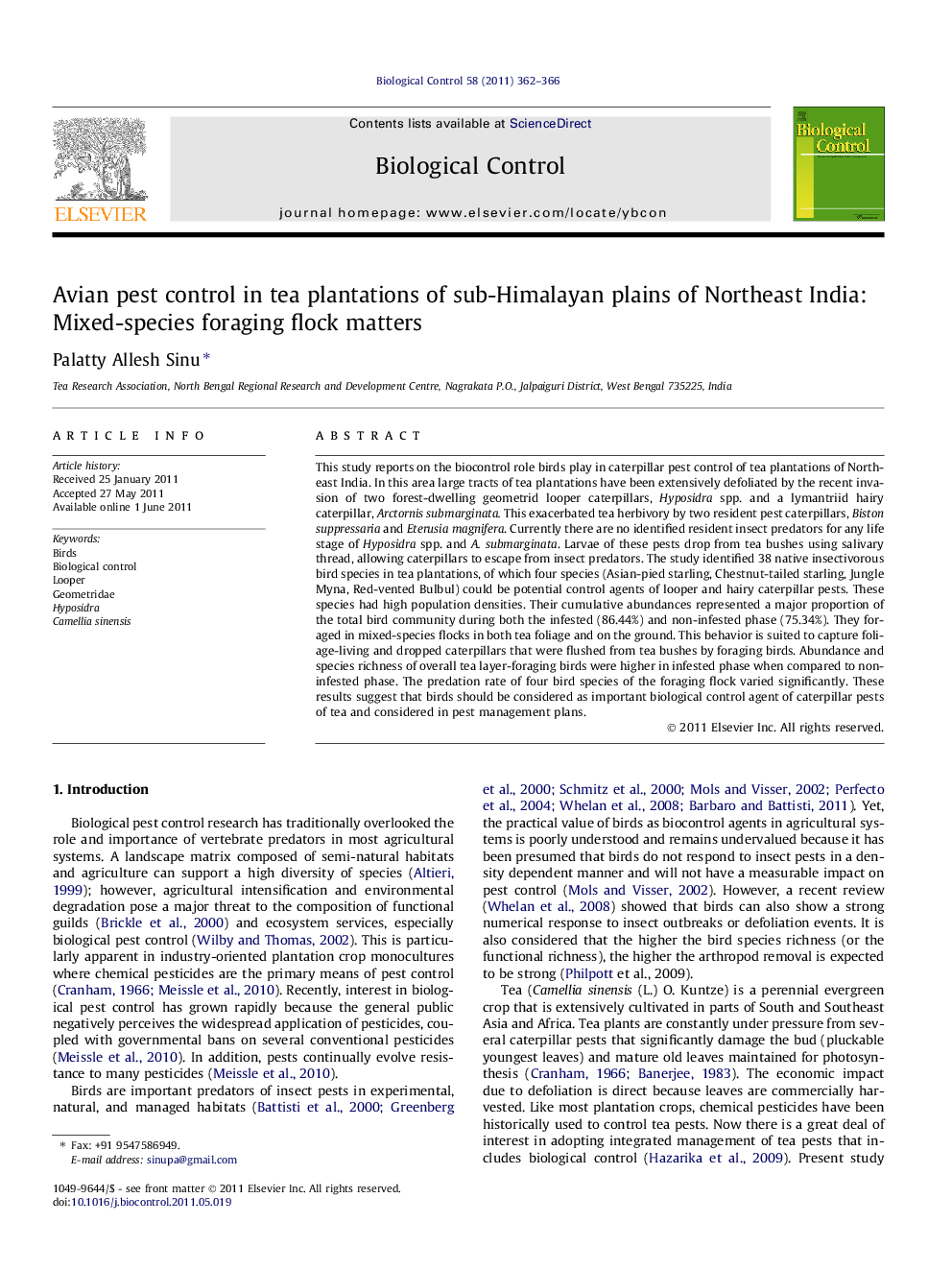| کد مقاله | کد نشریه | سال انتشار | مقاله انگلیسی | نسخه تمام متن |
|---|---|---|---|---|
| 4504270 | 1321082 | 2011 | 5 صفحه PDF | دانلود رایگان |

This study reports on the biocontrol role birds play in caterpillar pest control of tea plantations of Northeast India. In this area large tracts of tea plantations have been extensively defoliated by the recent invasion of two forest-dwelling geometrid looper caterpillars, Hyposidra spp. and a lymantriid hairy caterpillar, Arctornis submarginata. This exacerbated tea herbivory by two resident pest caterpillars, Biston suppressaria and Eterusia magnifera. Currently there are no identified resident insect predators for any life stage of Hyposidra spp. and A. submarginata. Larvae of these pests drop from tea bushes using salivary thread, allowing caterpillars to escape from insect predators. The study identified 38 native insectivorous bird species in tea plantations, of which four species (Asian-pied starling, Chestnut-tailed starling, Jungle Myna, Red-vented Bulbul) could be potential control agents of looper and hairy caterpillar pests. These species had high population densities. Their cumulative abundances represented a major proportion of the total bird community during both the infested (86.44%) and non-infested phase (75.34%). They foraged in mixed-species flocks in both tea foliage and on the ground. This behavior is suited to capture foliage-living and dropped caterpillars that were flushed from tea bushes by foraging birds. Abundance and species richness of overall tea layer-foraging birds were higher in infested phase when compared to non-infested phase. The predation rate of four bird species of the foraging flock varied significantly. These results suggest that birds should be considered as important biological control agent of caterpillar pests of tea and considered in pest management plans.
Figure optionsDownload as PowerPoint slideHighlights
► Four of 38 bird species were potential predators of caterpillar pests of tea due to their local density.
► Foraging in different strata of tea plantations by mixed-species flock increased biocontrol potential of birds.
► Ground-foraging Asian-pied starling captured dropped caterpillars that were flushed out by other birds in foliage layer.
Journal: Biological Control - Volume 58, Issue 3, September 2011, Pages 362–366